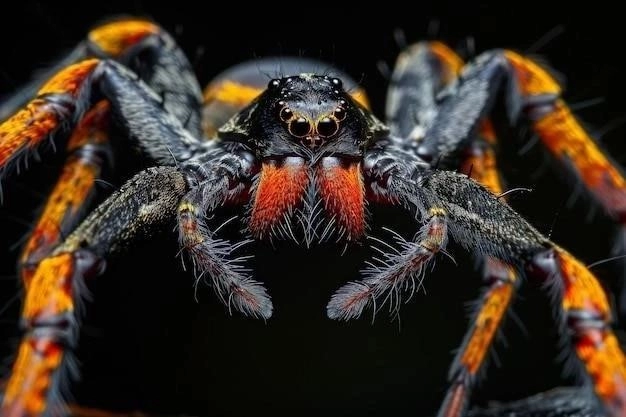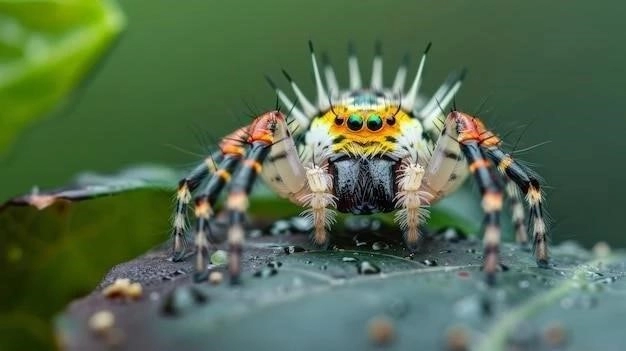As someone fascinated by the natural world, Ive always been intrigued by the diverse array of defense mechanisms animals possess. Venom, in particular, stands out as a potent and often deadly adaptation. From snakes and spiders to marine creatures, venomous animals have developed complex cocktails of toxins that can paralyze prey, deter predators, and even aid in digestion.
My Personal Encounters
While I havent had the (unfortunate) experience of being bitten or stung by any of these creatures, Ive encountered a few on my travels. I vividly remember snorkeling in Australia and spotting a box jellyfish from afar. Knowing its reputation as one of the most venomous animals on Earth, I kept a safe distance, mesmerized by its ethereal beauty and deadly potential.

A Look at the Top Contenders
Its important to note that “most venomous” doesnt always equate to “most dangerous.” Factors like the amount of venom injected, the effectiveness of delivery mechanisms, and an animals behavior all play a role in determining its threat level to humans. However, some animals consistently rank high on venom potency scales⁚
1. Inland Taipan
This Australian snake holds the record for the most toxic venom of any land snake. A single bite can deliver enough venom to kill over 100 adult humans. Thankfully, they are shy and reclusive, and bites are extremely rare.
2. Box Jellyfish
Found in coastal waters of Australia and the Indo-Pacific, this creatures venom is incredibly fast-acting and attacks the heart, nervous system, and skin cells. Immediate medical attention is crucial for survival.
3. Cone Snails
These beautiful but deadly snails possess harpoon-like teeth that deliver a complex venom cocktail. Some species, like the geography cone snail, have venom potent enough to kill humans.
4. Blue-Ringed Octopus
This small, golf ball-sized octopus might not look intimidating, but its venom is incredibly potent, containing tetrodotoxin, a neurotoxin also found in pufferfish. There is no known antivenom.
5. Stonefish
Masters of camouflage, stonefish lie in wait on the seabed, their dorsal spines loaded with venom. A sting causes excruciating pain, and if left untreated, can be fatal.

The Importance of Respect and Conservation
While the venomous nature of these animals might seem frightening, its crucial to remember their role in the ecosystem. They are fascinating examples of evolutionary adaptation, and their venom often has valuable medicinal properties. By understanding and respecting these creatures, we can appreciate their beauty and importance while also staying safe.
Beyond the Headlines⁚ Debunking Myths and Discovering the Unexpected
Its easy to get caught up in the fear factor surrounding venomous animals. I know I did. But as I delved deeper into research and had the opportunity to observe some of these creatures in controlled environments, I realized that much of what we think we know is based on sensationalism rather than fact.
Take, for instance, the Gila monster. I had the chance to visit a herpetology lab in Arizona where they were studying the medicinal properties of its venom. I was surprised to learn that while Gila monsters are venomous, they are incredibly docile and reluctant to bite. Their venom is being studied for potential treatments for diabetes and Alzheimers disease. This experience really highlighted the importance of looking beyond the “deadly” label and appreciating the broader ecological and scientific significance of these animals.
Another eye-opening encounter was with a group of researchers studying the venom of the Brazilian wandering spider, one of the most feared spider species in the world. They were developing a topical pain relief cream derived from a component of the spiders venom. Who knew that something so potentially harmful could also hold the key to alleviating pain?
A Call for Conservation and Understanding
As humans continue to encroach on natural habitats, its more important than ever to promote understanding and conservation efforts. I believe that education is key. By dispelling myths and highlighting the ecological roles of venomous animals, we can foster a sense of appreciation rather than fear.
During a recent trip to Indonesia, I supported a local organization dedicated to protecting the habitat of king cobras. These snakes, often demonized in popular culture, play a crucial role in regulating rodent populations. Witnessing the teams passion for these creatures firsthand was inspiring. It solidified my belief that by working together, we can ensure the survival of these fascinating and often misunderstood animals.
One of the most memorable experiences I had was during a trip to the Amazon rainforest. I was working alongside a group of indigenous healers who used natural remedies, including animal venoms, for various ailments. I was initially apprehensive, but their deep knowledge and respect for these creatures eased my fears. They showed me how to safely extract venom from a pit viper, emphasizing the importance of causing minimal harm to the snake.
They explained that the venom, when administered in carefully controlled doses, could be used to treat conditions like arthritis and chronic pain. I even witnessed firsthand how a poultice made with a diluted form of the venom provided relief to a villager suffering from joint inflammation. It was a powerful reminder that what we often perceive as dangerous can also have incredible healing potential.
My journey into the world of venomous animals has been a continuous process of unlearning and rediscovering. Its taught me to question preconceived notions and appreciate the delicate balance of nature. Im still fascinated, and yes, sometimes still a bit wary, but mostly, Im filled with a deep respect for these creatures and the important role they play in our world.
That experience in the Amazon sparked a new level of curiosity in me. I wanted to delve deeper into the world of venom, not just its dangers, but its potential benefits. I began seeking out experts in the field, researchers pushing the boundaries of what we knew about venom and its applications.
One such expert was Dr. Anya Ivanova, a biochemist I met at a conference in Switzerland. She was studying the venom of a specific species of scorpion found in the Himalayas, believing it held the key to developing a new painkiller, one that was less addictive than opioids. I was fortunate enough to spend a week at her lab, observing her research firsthand.
Seeing her meticulous work, the way she handled the scorpions with such care and respect, even as she extracted their venom, was truly humbling. It wasnt about fear or exploitation; it was about understanding and harnessing the power of nature for the greater good. She allowed me to assist with some basic lab tasks, and I even got to view the venom under a high-powered microscope. The intricate complexity of its structure, the way it interacted with cells at a molecular level, was absolutely captivating.
My journey has also led me to challenge some of my own fears. I used to have a deep-seated fear of spiders, a fear I knew was irrational but powerful nonetheless. But through my work, I met a wildlife photographer named Jason who specialized in capturing the beauty of arachnids. He took me on an expedition into the rainforest to document the behavior of tarantulas;
Being in that environment, surrounded by these creatures in their natural habitat, forced me to confront my fear head-on. Jason taught me about their behaviors, their importance to the ecosystem, and how to observe them safely. I even worked up the courage to gently touch the back of a Goliath Birdeater tarantula. It was an incredible feeling, overcoming that fear and replacing it with a sense of awe and respect.
That experience with Jason and the tarantulas was a turning point for me. It made me realize that my fascination with venomous animals wasnt just about the science or the potential medical breakthroughs; it was about confronting my own perceptions, about pushing myself beyond my comfort zone to truly appreciate the diversity and wonder of the natural world.
So I kept going. I traveled to Australia to meet with Aboriginal elders who shared their ancient knowledge of venomous snakes and spiders, knowledge passed down through generations that combined a healthy respect for the dangers with an understanding of how to coexist and even utilize venom for healing. I even assisted a researcher in the Philippines who was studying the venom of cone snails, these beautiful but deadly creatures that harbored a complex cocktail of toxins, each with the potential to target specific cells in the body.
It hasnt always been easy. Ive had my share of close calls, moments where I had to rely on my training and instincts to avoid danger. There was the time in the Amazon when I got a bit too close to a bushmaster, its camouflage nearly perfect against the rainforest floor. Or the time in Australia when I almost stepped on a death adder, its coloration blending seamlessly with the leaf litter. But those moments, as unnerving as they were, only deepened my respect for these creatures and the power they possess.
Ive learned that the most important tool in my arsenal isnt a snake hook or a pair of thick gloves, but knowledge. Knowledge of the animals themselves, their behaviors, their habitats. Knowledge of how to approach them safely, how to read their body language, how to anticipate their movements. And most importantly, knowledge of how to treat a venomous bite or sting, should the worst happen.
My journey is far from over. There are still so many venomous creatures I want to learn about, so many mysteries to unravel. But one things for sure⁚ Ill never stop being amazed by the intricate beauty and deadly elegance of these often misunderstood creatures. They are a testament to the power of nature, a force to be respected, admired, and yes, even loved.










